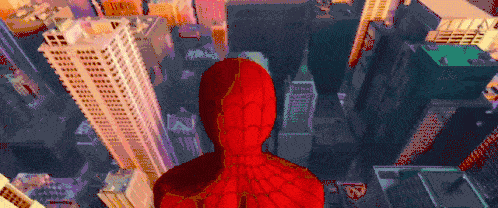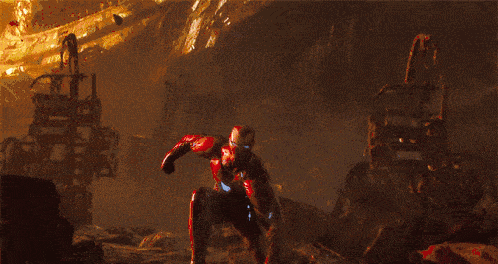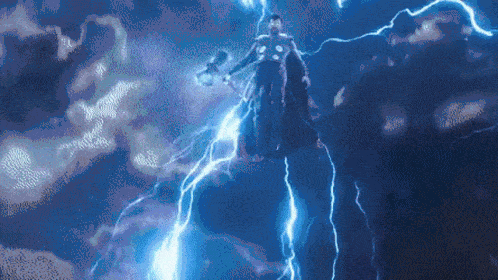What's your favourite type of house?
Advertisement - Scroll to continue
What's your favourite music genre?
What's your clothing style?
Which Web browser do you use?
What's your favorite sport discipline?
Which of your physical abilities is the best?
Advertisement - Scroll to continue
Which animal reflects your personality the best way?
What would you be as a fruit?
What kind of YouTube videos you watch the most often?
What was your favorite childhood toy?
What's your favorite part of the day?
Advertisement - Scroll to continue
What kind of cuisine do you like?
What accommodation on vacation is your favorite?
What coffee do you drink the most often?
What's your favorite tea?
What is your disadvantage?
Advertisement - Scroll to continue
What kind of weather do you like the most?
What is your advantage?
Which kind of art do you like the most?
What's your favorite school subject?





Hey everyone! Do you like Marvel heroes? If so, today’s quiz is for you! Answer twenty questions and find out which hero suits you best. Let’s talk about the Marvel comics first.
Marvel Comics is the brand name and primary imprint of Marvel Worldwide Inc., formerly Marvel Publishing, Inc., and Marvel Comics Group, a publisher of American comic books and related media. In 2009, The Walt Disney Company acquired Marvel Entertainment, Marvel Worldwide’s parent company.
Marvel was started in 1939 by Martin Goodman as Timely Comics, and by 1951 had generally become known as Atlas Comics. The Marvel era began in 1961, the year that the company launched The Fantastic Four and other superhero titles created by Stan Lee, Jack Kirby, Steve Ditko, and many others. The Marvel brand, which had been used over the years, was solidified as the company’s primary brand.
Marvel counts among its characters well-known superheroes like Spider-Man, Iron Man, Captain America, Thor, Hulk, Wolverine, and Captain Marvel, as well as popular superhero teams such as the Avengers, the X-Men, the Fantastic Four, and the Guardians of the Galaxy. Its stable of well-known supervillains includes the likes of Doctor Doom, Magneto, Ultron, Thanos, Green Goblin, and Kingpin. Most of Marvel’s fictional characters operate in a single reality known as the Marvel Universe, with most locations mirroring real-life places; many major characters are based in New York City. Additionally, Marvel has published several licensed properties from other companies. This includes Star Wars comics twice from 1977 to 1986 and again since 2015.
The first modern comic books under the Marvel Comics brand were the science-fiction anthology Journey into Mystery #69 and the teen-humor title Patsy Walker #95 (both cover-dated June 1961), which each displayed an “MC” box on its cover. Then, in the wake of DC Comics’ success in reviving superheroes in the late 1950s and early 1960s, particularly with the Flash, Green Lantern, Batman, Superman, Wonder Woman, Green Arrow, and other members of the team the Justice League of America, Marvel followed suit.
In 1961, writer-editor Stan Lee revolutionized superhero comics by introducing superheroes designed to appeal to older readers than the predominantly child audiences of the medium, thus ushering in what Marvel later called the Marvel Age of Comics. Modern Marvel’s first superhero team, the titular stars of The Fantastic Four #1 (Nov. 1961), broke convention with other comic book archetypes of the time by squabbling, holding grudges both deep and petty, and eschewing anonymity or secret identities in favor of celebrity status. Subsequently, Marvel comics developed a reputation for focusing on characterization and adult issues to a greater extent than most superhero comics before them, a quality which the new generation of older readers appreciated. This applied to The Amazing Spider-Man title in particular, which turned out to be Marvel’s most successful book. Its young hero suffered from self-doubt and mundane problems like any other teenager, something with which many readers could identify.
Stan Lee and freelance artist and eventual co-plotter Jack Kirby’s Fantastic Four originated in a Cold War culture that led their creators to revise the superhero conventions of previous eras to better reflect the psychological spirit of their age. Eschewing such comic book tropes as secret identities and even costumes at first, having a monster as one of the heroes, and having its characters bicker and complain in what was later called a “superheroes in the real world” approach, the series represented a change that proved to be a great success.
Marvel often presented flawed superheroes, freaks, and misfits—unlike the perfect, handsome, athletic heroes found in previous traditional comic books. Some Marvel heroes looked like villains and monsters such as the Hulk and the Thing. This naturalistic approach even extended into topical politics.
In addition to Spider-Man and the Fantastic Four, Marvel began publishing further superhero titles featuring such heroes and antiheroes as the Hulk, Thor, Ant-Man, Iron Man, the X-Men, Daredevil, the Inhumans, Black Panther, Doctor Strange, Captain Marvel and the Silver Surfer, and such memorable antagonists as Doctor Doom, Magneto, Galactus, Loki, the Green Goblin, and Doctor Octopus, all existing in a shared reality known as the Marvel Universe, with locations that mirror real-life cities such as New York, Los Angeles, and Chicago.
Originally, the company’s publications were branded by a minuscule “Mc” on the upper right-hand corner of the covers. However, artist/writer Steve Ditko put a larger masthead picture of the title character of The Amazing Spider-Man on the upper left-hand corner on issue #2 that included the series’ issue number and price. Lee appreciated the value of this visual motif and adapted it for the company’s entire publishing line. This branding pattern, being typically either a full-body picture of the characters’ solo titles or a collection of the main characters’ faces in ensemble titles, would become standard for Marvel for decades.
What is your favorite superhero? Do you have anything in common with them? Answer twenty questions in our quiz and see what Marvel Universe character you are like!
